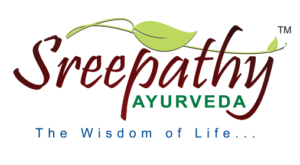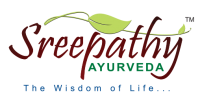KALARI UZHICHIL & PANCHAKARMA COURSE
Kalarai Uzhichil is a massage therapy based on the Indian martial art of Kalaripayattu, while Panchakarma is a holistic healing practice that originated from Ayurveda. A course in Kalarai Uzhichil and Panchakarma combines the two practices, offering students a comprehensive understanding of holistic health and wellness. Graduates may pursue careers as massage therapists, Ayurvedic practitioners, or wellness coaches.
Course Duration: 1 Year





Syllabus
| SUBJECTS: PART A | ||
1 | Moolasiddhanta of ayurveda (Basic principles of Ayurveda) | 100 Marks |
2 | Anatomy &Physilogy | 100 Marks |
3 | Panchakarma Part I | 100 Marks |
4 | Kalarippayat and Yoga | 100 Marks |
| SUBJECTS: PART B | ||
1 | Panchakarma Part II | 100 Marks |
2 | Marma | 100 Marks |
3 | KalariUzhichil and Massage Therapy | 100 Marks |
4 | Basic nursing care and Communicative English | 100 Marks |
| KALARI UZHICHIL AND PANCHAKARMA COURSE – SYLLABUS: | ||
| 1. MOOLA SIDDHANTA OF AYURVEDA: | ||
| Definition – ayurveda, four goals of life origin of Ayurveda, The eight branches of ayurveda, The Brihatrayees and Laghutryees, Panchbhutatattyva, Tridosha- Vatta, Pitta &Kapha- Qualities. Actions formation sthana (Place) in the body based on day &night age sapthadhatus Rasa RaktaMamsaMedas ,AstiMajjasukra&sronita their formation, functiona. Trimalas – Purisha, Mutra, Seda – Formation and Functions. Agnis – Saptadhatnagni, Panchabhutagni, Jataragni. Vegas (Urges)- 13 Types pf Vegas- Vegas to be controlled – Vegas to be not controlled. Definition of diseases, Synonyms of Roga. Classification of diseases- Sadhya, Asadhya. Classification of diseases based on tridoshas, Vata – 80, Pitta- 40, Kapha- 20. | ||
| ROGANIDHANA: | ||
| Shadkriyakalas, Rogipareeksha – Trividhapareeksha- DARS’ana, Spars’ana&Pras’na, Ashtasthanapareedsha. | ||
| ROGA – VINISCHAYA: | ||
| The diseases Causative factors, signs &synotoms, classifications, sadhya- asadhya- in a compact format. | ||
| DRAVYAGUNA: | ||
| Aknowledge on – Rasa, Guna karma viryavipaka and prabhava of herbs and other resources. | ||
| BAISHAJYA KALPA: | ||
| Knowledge on the usage of Aushadi according to tridoshas, Types pf aushadivarious formulations in ayurvedaAshada kala. | ||
| KAYA CHIKITSA: | ||
Treatments for the various diseases. Aknowledge on the steps applied in the treatment of the diseases according to the sastra. | ||
| 2. BASICS OF ANATOMY AND PHYSIOLOGY OF THE HUMAN BODY | ||
| 1 | Knowledge on various systems of the body. Anatomical position and physiological functions. | |
| 2 | Knowledge on Ayurvedicvarma points. | |
| 3. PANCHA KARMA- I | ||
| GENERAL INTRODUCTION TO CHIKITSA- a) Samsodhana. b) Samsamana | ||
| SIX TYPES OF CLASSICAL THERAPY (SHADUPAKRAMAS)- 1. Langhana, 2. Brimhana, 3.Rokshana, 4. Snehana, 5. Swedana, 6. Stambana | ||
| AbhyangaChikitsa and its classification on various criteria. | ||
| THE CLASSICAL AYURVEDIYA PANCHAKARMA – THE STAGES OF PANCHAKARMA TREATMENT – A) PURVA KARMA, B) PRADHANA KARMA AND C)PASCHAT KARMA. | ||
| Classification of Panchakarma according to kaya chikitsa and shalya. | ||
SCOPE OF PANCHA KARMA | ||
| PURVA KARMA: | ||
| Snehana karma – Properties, basic sources of snehadravyas, indications of snehana, contra – indications of snehana, procedures of snehana, anupana in sncana, observations of the patient – a) features of samyaksnehanaq (adequate), b) features of asamyaksnehana (in adequate), c) features of atisnighana (excessive) d) snehavyapada, post snehana regimen. | ||
| SWEDANA KARMA: | ||
| Classification – sagni&Anagni, Indications, contra- indications, procedure of swedana, observations of the patient- a) Samyaksweda, b) Asamyaksweda, c) Atisweda, post swedana regimen, mode of action of sweda. | ||
| PRADHANA KARMA: | ||
| Classification according to kaya chikitsa&shalya. | ||
| VAMANA KARMA: | ||
| Introduction, pharmacodynamic properties of vamakadravyas, indications, contra- indications, procedure of vamana, pathya – apathya, samyakvamana, asamyakvamana, ativamanasamsarjana karma. | ||
| VIRECHANA KARMA: | ||
Introduction, Virechana drugs, indications of virch, Ana, contra- indications procedure of virechana, general precautions, samyakvirechana, asamyakvirechana, ati- virechana, virechanavyapada. | ||
4.KALARIPPAYAT and YOGA – The basic exercises which increases one’s flexibility and agility, strengthens the muscles and tendons, Pranayam, Yoga. | ||
| 5. PANCHA KARMA- II | ||
| VASTI KARMA: | ||
| Introduction Classification, Indications for Asthapana, Contra-indications for Asthapana, Indications for Anuvasana, Contra- indications for Anuvasana, Procedure of Vasti, Post Vasti, Regimen, VastiVyapada. | ||
| SIRO- VIRECHANH KARMA (OR) NASYA KARMA: | ||
| Introduction, Classification, Navananasya, Avapidanasya, Pradhamananasya, Dhumanasya, Marsa- Pratimarsanasya, Nasya drugs, And their procedcodynamics, Indications, Contraindications, Procedure of nasya, Post nasya regimen, Samyaknasya, Asmyaknasya, Atinasya, Nasyavyapad. | ||
| RAKTHAMOKSHANA: | ||
| Introduction Classification, Features of normal rakta, Functions of rakta, Indications of raktamokshana, Contra- mokshana, Jalaukaavacharana, Sira- Vyadha.Indications contra – indications, Samyak, Sira- Vyadha, Asamyaksira- Vyadha, Atisira- Vyadha, Raktastambana, Post – Raktamikshana regimen, Prachana, Alabu, Ghati- Yantra. The vahihparimarjana therapies of Ayurveda – an introduction. | ||
| KERALIYA PANCHA KARMA: | ||
| Keraliyapanchakarma- Its five components, Dhara Kaya seka, Pinda- Sweda, Anna lepa, Siro lepa – Introduction, Comparison of classical Ayurveda panchakarma&KeraliyaPanchakarma. | ||
| DHARA: | ||
| Introduction Classifications, dhroni – VidhanamSarawavidhara, Stri- StanyaYuktakshradhara, Thailadhara, Kwatha (Ausadhi0 dhara, Siro- Dhara procedure. | ||
| KAYASEKA: | ||
| Introduction, The Procedure. Complications. | ||
| PINDA SWEDA (OR) NAVARAKIZHI: | ||
| Procedure, Preparation of pottali and payasam, Ela kizhi, Podi – kizhi-procedure. | ||
| ANNALEPA: | ||
| Introduction, Preparation of Anna lepa, Method of treatment. | ||
| SIROLEPA: | ||
| Introduction, Preparation, Method | ||
| SIRO VASTI: | ||
| Introduction, Preparation, Method | ||
| UDVARTANA: | ||
Introduction, Preparation, Method. | ||
6.MARMA – ayurvedamarmasastra and KalariMarma Sastra | ||
7.KALARI UZHICHIL and MASSAGE THERAPY– Kalari massage, massage Therapy- Definition, history, purpose, precautions, preparation, Massage, Types of strokes, Types of massage,meridians, feet palm auricular reflexology, Post massage regimen. | ||
8.BASIC NURSING CARE- aims to meet the patient’s unique needs with regard to hygiene, nutrition, elimination and medication administration, and includes communication in an environment in which the physical and mental health of the patient is promoted. ChikitsaChathushpada COMMUNICATIVE ENGLISH
| ||
Book an Online Consultation with Dr.Siju Muraleedharan
Get Authentic Ayurveda Treatments For A Healthy Life.
Important Links
- About us
- Online Consultation
- Privacy Policy
- Terms & Conditions
- Shipping and Refund
Our Location
- Sreepathy Ayurveda Clinic, Near Mahadeva Temple, Kovilpadam Road, Ettumanoor, Kerala, India 686631
- doctorsiju@gmail.com
- +91 6238 110 306
Join Our Facebook Group
Join our Facebook Group to learn and discuss about ayurveda.
© Copyright 2023 Sreepathy Ayurvedam All Right Reserved.

